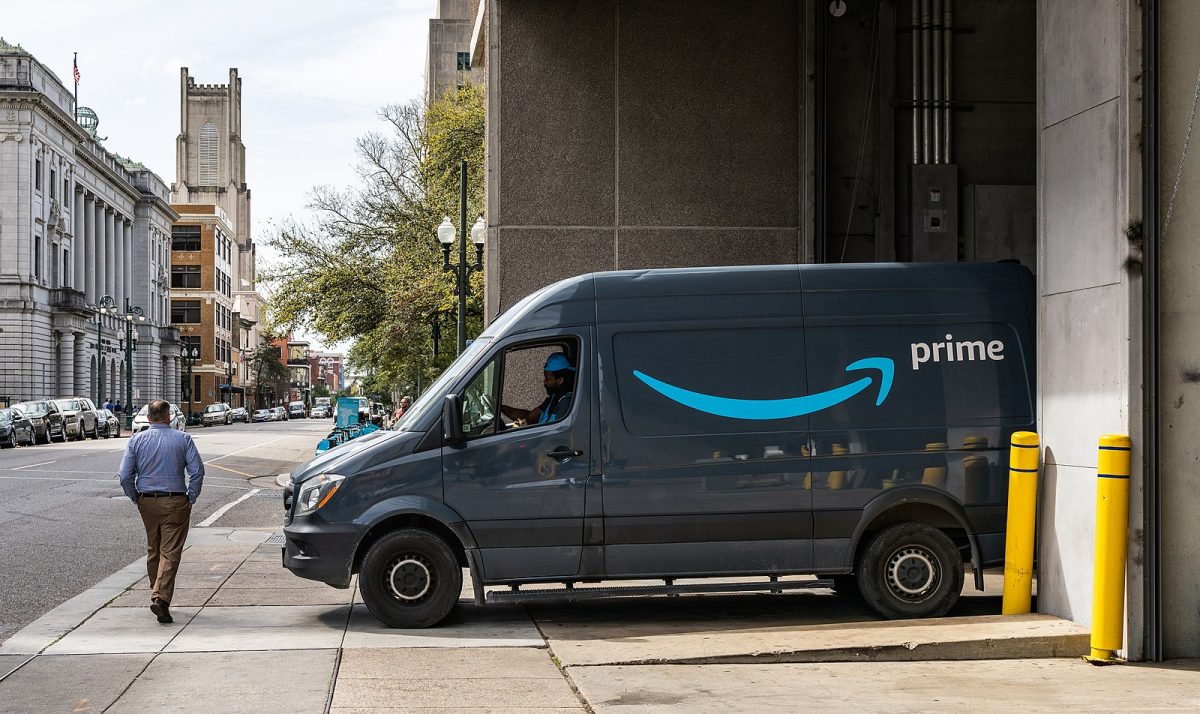Amazon has recently swept the holiday gift shopping world by storm appropriately adjusting to the exponential increase of technological advances in the business industry. A rise in social media platforms and digital communication mediums improves the efficiency of gift shopping and consequently further boosts sales for digitally-savvy companies.
However, Amazon’s recent success and technological adaptations have resulted in a decrease in sales from the allegedly “antiquated” mall storefronts.
Moreover, the Covid-19 pandemic’s isolative effects didn’t contribute to the improvement of sale success to dig companies and business conglomerates out of the dark rabbit hole impeding their economic prosperity, and instead further perpetuated their vulnerabilities to the modern digital age.
The installation of quarantining upon the pandemic’s arrival in the United States in 2020 added more fuel to Amazon’s massive fire of profit and solidified a new digital era that eliminated in-person shopping for some altogether. This detachment from in-person shopping even continued when the pandemic had relaxed.
Traditional mortar-and-pestle stores became jeopardized after suffering from a depletion of customer interaction and limited employees. Despite promising marketing tactics, these businesses struggled to attract new and returning customers to locations for purchasing holiday merchandise. Lethargic American citizens preferred to make the convenient 30-second trip to their laptops instead of exposing themselves to the disease-infested atmosphere to pick up the essential holiday present.
Shoppers quickly exploited the pandemic’s quarantine qualities by lazily awaiting their gift deliveries from Amazon delivery vehicles, without experiencing the two-way physical connection that holiday gift shopping instills.
Ever since the pandemic, in-person storefronts have attempted to compete with Amazon by price-matching cheaper Amazon goods to try to retain their customer service. By increasing user-friendly websites and curbside pickup options, storefronts are better able to maintain their clientele loyalty.
The introduction of Sunday delivery improves the shopping experience by adhering to the homebody and pre-occupied American demographic. By accommodating the needs of shoppers through improving accessibility and effectiveness, in-person retail locations become more appealing to shoppers across the board.
To compete with Amazon, in-person retailers, specifically Best Buy, have previously attempted to refund the difference of an item until Christmas Eve if a customer finds it priced lower elsewhere. Their method to boost sales, however, comes with its downsides, resulting in lower prices potentially dictating less profit. This is a risk that these retailers are willing to take to maximize customer persuasion.
Instead of succumbing to the arrival of digital shopping platforms, in-person retail spaces have adapted to the American demographic’s preferences by embracing these changes. They began using their locations as warehouses to store inventory that would later ship to customers’ homes.
The advent of new technologies furthers competition between companies by establishing an uphill battle for maximum holiday-season profits. An inevitable competitive edge in the marketing industry generates increased friction for businesses to receive a security blanket that keeps them safe by kick-starting their success in the upcoming year. Amazon continues to increase its distribution locations to compete with its business opponents.
According to a CPC study conducted in 2018, 80.1% of consumers were predicted to utilize Amazon for holiday gift shopping, 46.2% of purchases were predicted to be online, 28.5% as in stored purchases, and 25.3% for both options.
During this past Holiday season in 2022, over ⅔ of Americans selected Amazon for its primary gift shopping medium.
In an era full of digital media, Amazon has an advantage in its advertising techniques, using platforms such as Tik Tok and Instagram to market its products to influencers and other potential customers. Livestreams and marketing advertisements are appropriately used by Amazon to disseminate their message to the general public.
“I think that Amazon has definitely used social media to its advantage and utilized digital marketing through social media platforms that allow them to engage with their customers even more and promote their company. This would therefore make Amazon more successful,” said Hills sophomore Sameeha Ahmed.
Amazon has taken over the holiday industry with its accessibility and strategic marketing tactics that persuade the general public to pick their system for gift purchases this winter. As the world continues to further evolve digitally, traditional mortar-and-pestle retail locations lose buyers to the more technologically superior Amazon able to accommodate more consumer needs.
Sources:
https://www.retaildive.com/news/80-of-online-shoppers-will-use-amazon-this-holiday-season/539655/











































